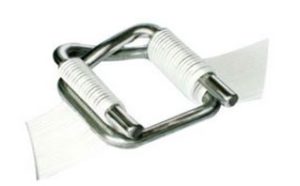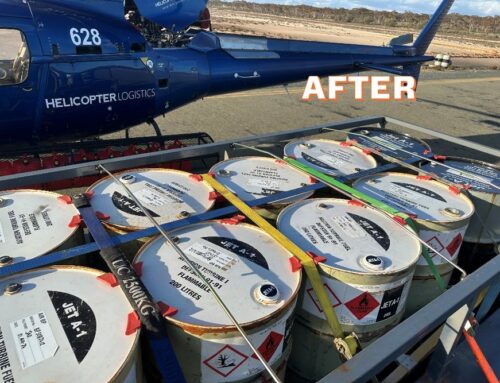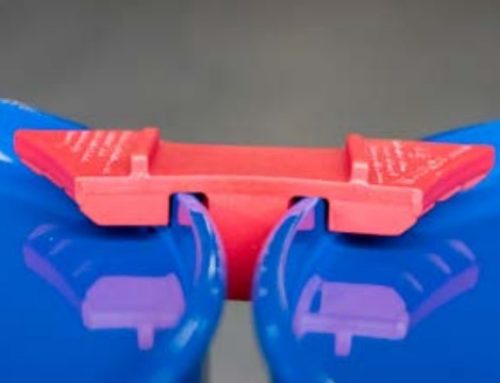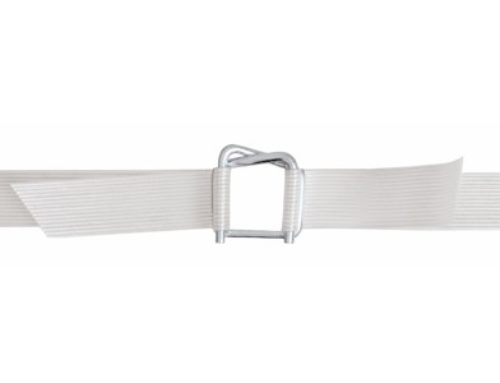Case Study: Composite Strapping vs. Steel Strapping
Replacing Steel Strapping with Composite Strapping in Australia’s Leading Home and Hardware Store Supply Chain.
Australia’s leading home and hardware retail chain identified a pressing need to improve workplace safety across its distribution centers.
Historically, steel strapping was used to secure inbound goods. However, this practice led to multiple serious injuries when staff cut the steel straps, prompting a corporate initiative to eliminate steel strapping entirely from their supply chain.
While the company had already reduced the volume of steel strapping significantly, some suppliers expressed hesitation. They believed steel strapping was irreplaceable for their specific product needs. This case study explores how those concerns were addressed through the introduction of composite strapping as an alternative.

Supplier Concerns
Several suppliers raised the following concerns about transitioning away from steel strapping
-
-
-
-
- Belief that no strap is stronger than steel
- Concerns over pack tightness
- Assumptions that non-metallic straps can’t withstand chemicals or high kiln temperatures
- Perceived cost increases
-
-
-
Our team was invited to provide data-driven comparisons and help resolve these objections.
Solution: Cargo Restraints Systems’ Pallet Strapping
Cargo Restraint Systems’ composite strapping was presented as a viable alternative. The strapping is made from high-tenacity polyester yarns encased in a polypropylene coating. It is the only strapping available in the market that is stronger than steel strapping when compared size for size.
Product Features:
- High strength-to-size ratio (stronger than steel in equivalent sizes)
- Resistant to splitting, weather conditions, and abrasion
- Retains tension well over time
- Re-tensionable; a perfect solution for timber suppliers as timber packs often crimp and expand.
Strength and Application
Composite pallet strapping is available in many sizes. The various sizes offer a solution to suppliers that are using either a 13mm, 16mm, 19mm or 32mm steel strapping.
The system strengths of our pallet strapping range from 480kgto 2,600kg. Again, this offers a solution to suppliers using various types of steel strapping depending on their requirements.
The composite strapping is fastened using a galvanized steel wire buckle instead of a steel crimp. Unlike a steel crimp, the wire buckle provides a consistent and strong joint; therefore guaranteeing a consistent system strength.
Tensioning of the strapping is done via manual, battery, or pneumatic tools—all of which are low-cost and low-maintenance.
Key Benefits Composite Pallet Strapping
SAFETY: Soft, non-metallic edges eliminate injury risk from recoil and sharp cuts
LIGHTWEIGHT: Coils weigh approx. 10kg—five times lighter than steel
PRODUCT PROTECTION: Soft texture avoids surface damage; reduces need for extra protective packaging
RUST & CHEMICAL RESISTANCE: Does not rust or degrade; suitable for chemically treated goods
THERMAL RESISTANCE: Performs well from -30°C to 140°C, with a softening point at 125°C
COST EFFICIENCY: Fewer tools required, lower maintenance, and potential for re-use and re-tensioning
FLEXIBILITY: Conforms to irregular shapes and corners better than steel

Composite Strapping / Steel Strapping Comparison
| Feature | Polyester Composite Strapping | Steel Strapping |
|---|---|---|
| System Strength Consistency | High (due to buckle) | Low (operator/tool dependent) |
| Safety | Extremely Safe | Unsafe; risk of cutting injuries and recoil |
| Weight | Lightweight (19mm – 10kg/500mtr) | Heavy (19mm – 15kg/180mtr) |
| Product damage risk | Low (non-abrasive, no rot, no rust) | High (abrasive, rot, rust) |
| Weather/Chemical resistant | Excellent | Susceptible to rust |
| Tooling cost | Low | High |
| Re-usable / Re-tensionable | Yes | No |
Conclusion
The transition from steel to composite strapping proved successful in improving workplace safety, maintaining product integrity, and offering operational cost benefits. The composite solution addressed all supplier concerns while enhancing logistics processes. For a detailed report or product specifications, please get in touch us.
Contact Us to Find Your Solution
Our team is dedicated to fostering strong partnerships and delivering innovative load restraint solutions that drive success. For more information about our strapping products, call us on 1300 478 727. We would be happy to visit your site free of charge to offer expert advice and training on how to securely and efficiently strap your items.







